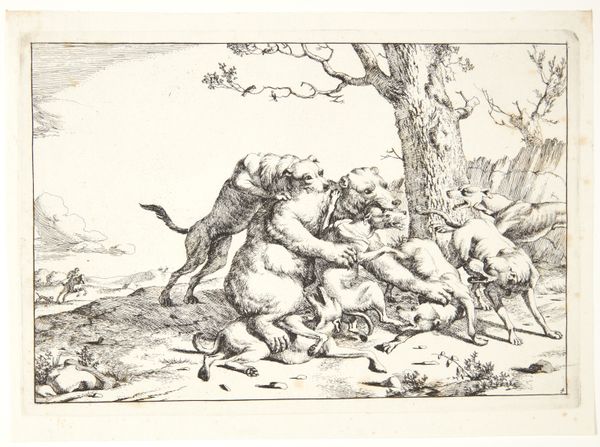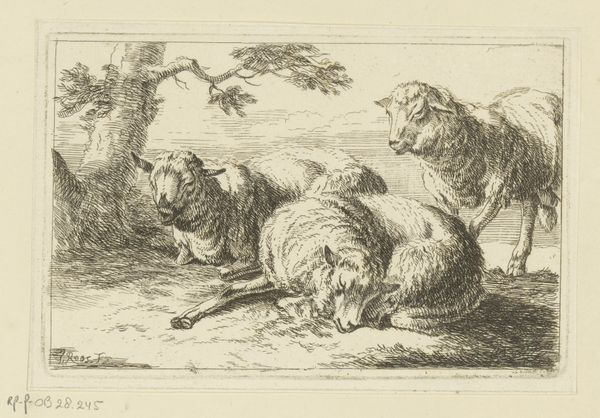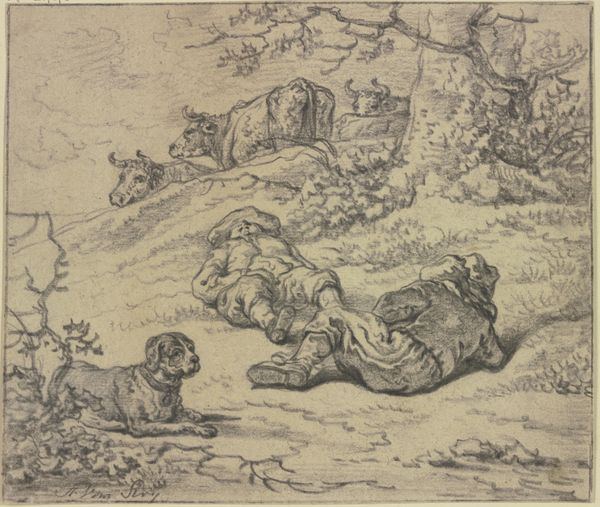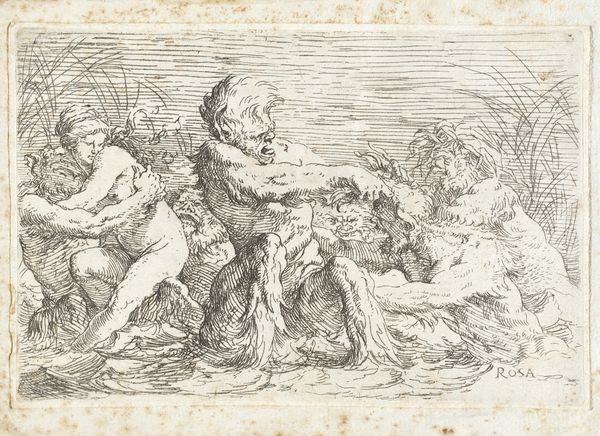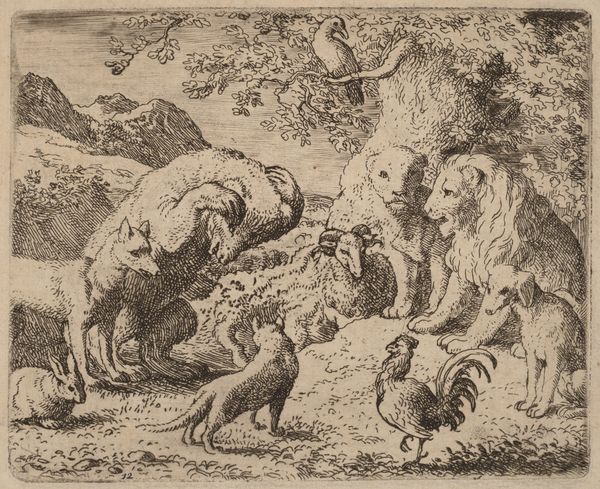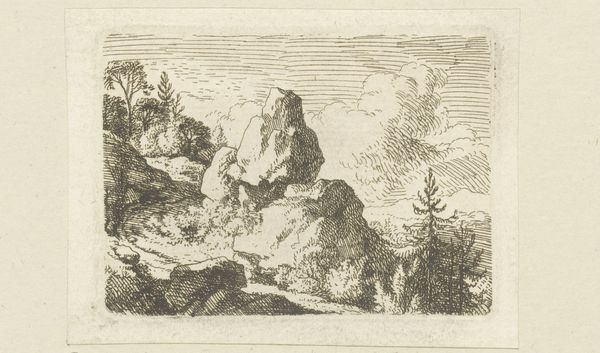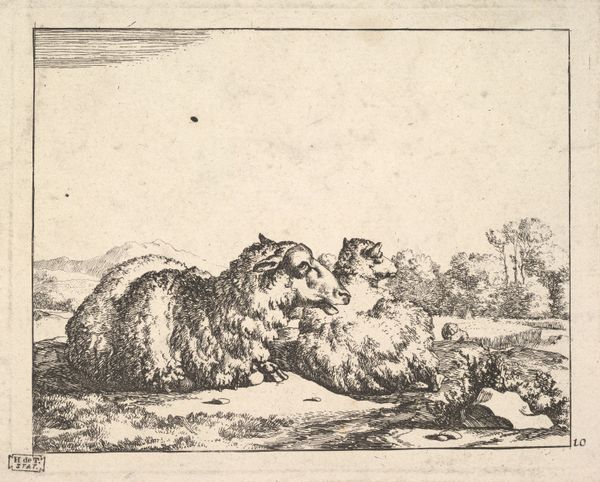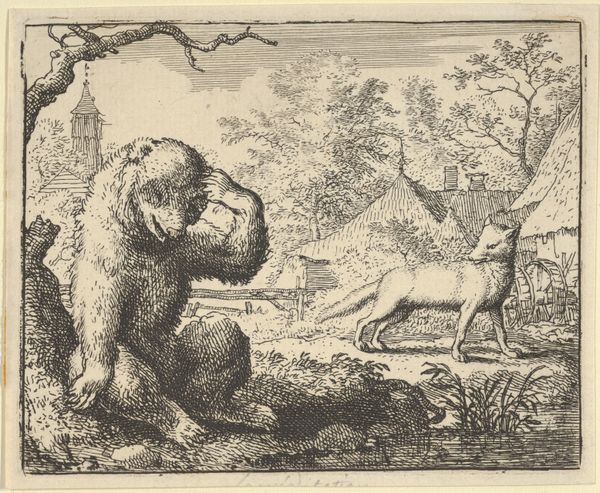
drawing, red-chalk, ink, pen
#
drawing
#
baroque
#
red-chalk
#
pen sketch
#
pencil sketch
#
figuration
#
ink
#
german
#
ink drawing experimentation
#
15_18th-century
#
pen
#
genre-painting
Copyright: Public Domain
Curator: At first glance, there's a raw vitality to this drawing. A primal scene unfolds before us. Editor: Indeed. What we're viewing is Johann Ludwig von Pfeiff’s drawing, "Zwei kämpfende Löwen und zwei kämpfende Bären" or "Two Fighting Lions and Two Fighting Bears" in English. The red chalk and ink medium allows a study in action and fury, now housed here at the Städel Museum. Curator: I’m immediately struck by the dynamism—the intersecting diagonals of the animals’ bodies. The composition isn’t just representational; it's an exercise in conveying movement, perhaps an experiment to depict something dynamic rather than still. Editor: Absolutely. The intertwined lions become emblems of raw power and aggression, their conflict serving as a symbol for deeper struggles, perhaps mirroring human battles for dominance or even moral conflicts. Curator: Note the artist's approach to form. There's an emphasis on contour, yes, but the interior hatching suggests volume and weight without fully committing to realism. Observe the economy of line, capturing so much with such efficient strokes. Editor: Right, lions often symbolize courage, royalty, and strength, while bears might represent raw power and instinct. The convergence of these two apex predators is loaded with symbolic meaning. But let’s not disregard the psychological dimension: aggression is a common human drive, the violence enacted here resonates, reminding of something buried inside our primitive past. Curator: One could argue this isn't just about bestial struggle. Pfeiff masterfully captures their intense struggle with impressive anatomical accuracy—observe the tension in their musculature, the ferocity conveyed by a few cleverly placed strokes of ink, or strokes of chalk. Editor: I agree. This is where animal studies offer a portal to exploring human psychology. Seeing animals enact brutality makes viewers face the violence, chaos and uncontrollable drive of desire within their species, ours too. The drawing, then, allows introspection and questioning the role of aggression in identity formation. Curator: Precisely, it's a remarkably effective study. By embracing a limited palette and focusing on dynamic interplay, the drawing achieves something that would not have been accessible to Pfeiff's public, if delivered through highly crafted oils or other laborious pictorial device. Editor: Pfeiff seems to want to say through his images, the line dividing animal from human, the symbolic versus lived reality, and our conscious, as rational actors, from more aggressive instinctive nature might not be so defined as we make it out to be. A notion he elegantly and forcefully offers for the audience.
Comments
No comments
Be the first to comment and join the conversation on the ultimate creative platform.
